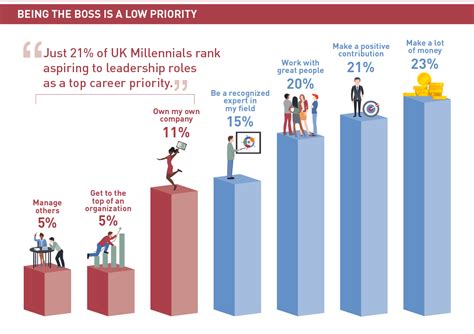
Consumers may unknowingly be paying inflated prices as corporations leverage data collection and sophisticated surveillance techniques to personalize pricing based on individual willingness to pay. The practice, dubbed “surveillance pricing,” raises ethical concerns and questions about fairness in the marketplace.
Surveillance Pricing: Are You Paying More Because They’re Watching?
Corporations are increasingly employing sophisticated data collection and surveillance methods to gauge consumers’ willingness to pay, potentially leading to individualized pricing strategies that could result in some customers paying more than others for the same products or services. This practice, known as “surveillance pricing,” is raising concerns about fairness, transparency, and the ethical implications of leveraging personal data for profit maximization.
“Corporations now have an unprecedented capacity to surveil us,” stated Professor Justin Brookman, senior policy counsel at Consumer Reports. “And they are using that to charge us more.” This highlights the central issue: the asymmetry of information between corporations and consumers and how this imbalance can be exploited.
The digital age has provided companies with a wealth of data points that can be analyzed to predict consumer behavior and willingness to pay. These data points include browsing history, purchase patterns, location data, social media activity, and even the type of device being used to access a website. Algorithms can then process this information to create a personalized profile of each consumer, allowing companies to tailor pricing accordingly.
According to the article, one common example of surveillance pricing is the use of dynamic pricing on e-commerce websites. Airlines and hotels have long employed this strategy, adjusting prices based on demand and time of day. However, the practice is now becoming more widespread, with retailers using real-time data to adjust prices based on factors such as a customer’s location, browsing history, and past purchases.
For instance, a customer who frequently purchases organic food or high-end brands may be shown higher prices for similar products compared to a customer who typically buys generic or discounted items. Similarly, a customer accessing a website from a wealthy zip code might be quoted a higher price than someone browsing from a lower-income area.
The article raises questions about the transparency of these practices. Consumers are often unaware that their data is being used to determine the prices they see, making it difficult to comparison shop or negotiate for better deals. This lack of transparency can erode trust and create a sense of unfairness, particularly if consumers suspect they are being deliberately overcharged.
The legality of surveillance pricing is a complex issue. While there are no specific laws that explicitly prohibit the practice in all contexts, it could potentially run afoul of existing consumer protection laws that prohibit deceptive or unfair trade practices. For example, if a company falsely advertises a price or fails to disclose that prices may vary based on individual consumer data, it could be subject to legal action.
Furthermore, surveillance pricing could raise concerns under antitrust laws if it is used to collude with competitors to fix prices or discriminate against certain groups of consumers.
However, proving that a company is engaging in surveillance pricing and that it is causing harm to consumers can be challenging. The algorithms used to determine prices are often proprietary and opaque, making it difficult to understand how they work or to demonstrate that they are being used in a discriminatory or unfair manner.
The article emphasizes the need for greater transparency and regulation in the area of data collection and pricing. Consumers should have the right to know what data companies are collecting about them and how it is being used. They should also have the right to access and correct their data and to opt out of data collection practices.
Furthermore, regulators should consider establishing clear rules and guidelines for pricing practices to ensure that they are fair, transparent, and non-discriminatory. This could include requiring companies to disclose that prices may vary based on individual consumer data, prohibiting the use of certain types of data for pricing purposes, or establishing standards for algorithmic transparency.
The rise of surveillance pricing highlights the growing tension between the benefits of data-driven personalization and the need to protect consumer rights and ensure fairness in the marketplace. As technology continues to evolve, it is crucial that policymakers, businesses, and consumers work together to establish ethical and legal frameworks that promote transparency, accountability, and consumer empowerment.
The issue extends beyond mere price differences. It delves into the potential for reinforcing existing societal inequalities. If algorithms consistently charge certain demographic groups more for essential goods and services, it could exacerbate economic disparities and create further disadvantage for vulnerable populations. This raises significant social justice concerns that require careful consideration.
Moreover, the potential for errors in algorithmic pricing is a major concern. If an algorithm misinterprets a consumer’s data or makes inaccurate predictions about their willingness to pay, it could result in unfair pricing. For instance, a consumer who occasionally purchases luxury items might be wrongly classified as a high-value customer and consistently charged higher prices, even for everyday goods. Such errors can lead to consumer frustration and distrust.
The long-term implications of widespread surveillance pricing are also uncertain. Some argue that it could lead to a race to the bottom, where companies compete to collect the most data and develop the most sophisticated pricing algorithms. This could create a surveillance arms race that erodes consumer privacy and further entrenches corporate power.
Others argue that surveillance pricing could ultimately benefit consumers by allowing companies to offer more personalized products and services at prices that reflect their individual needs and preferences. However, this optimistic scenario depends on the existence of strong consumer protections and regulations to ensure that surveillance pricing is used fairly and transparently.
The key challenge lies in finding a balance between allowing companies to innovate and personalize their offerings while protecting consumers from unfair or discriminatory pricing practices. This requires a multi-faceted approach that includes stronger data privacy laws, greater algorithmic transparency, and robust enforcement of consumer protection laws.
The article further examines the role of behavioral economics in understanding how surveillance pricing can influence consumer behavior. Studies have shown that consumers are often more sensitive to losses than gains. Therefore, the prospect of paying a higher price than someone else can be a powerful motivator, even if the absolute difference is small.
This psychological effect can be exploited by companies to encourage consumers to make purchases they might not otherwise make. For example, a retailer might show a customer a limited-time offer or a personalized discount to create a sense of urgency and encourage them to buy a product before the price goes up.
The ethical considerations surrounding surveillance pricing are also complex. While some argue that companies have a right to use data to maximize their profits, others contend that it is unethical to exploit consumers’ personal information to charge them more. This debate raises fundamental questions about the balance between corporate interests and consumer rights.
Ultimately, the future of surveillance pricing will depend on the choices made by policymakers, businesses, and consumers. By demanding greater transparency, advocating for stronger consumer protections, and making informed purchasing decisions, consumers can play a crucial role in shaping the future of this controversial practice. The discussion needs to expand beyond academic and policy circles to involve broader public awareness and engagement. Educating consumers about these practices is the first step toward empowering them to make informed decisions and demand greater accountability from corporations.
The Yahoo Finance article cites several experts in the field, including those from Consumer Reports and academic institutions, to provide a balanced perspective on the issue. These experts emphasize the importance of understanding the potential risks and benefits of surveillance pricing and the need for ongoing research and dialogue to inform policy decisions.
The rise of Artificial Intelligence (AI) and Machine Learning (ML) further complicates the issue. These technologies are increasingly being used to automate pricing decisions, making it even more difficult to understand how prices are being determined and to hold companies accountable for unfair or discriminatory pricing practices. The article points out that regulation needs to keep pace with technological advancements to ensure that consumer rights are protected in the age of AI-driven pricing.
The global nature of e-commerce also presents challenges for regulating surveillance pricing. Companies can operate across borders, making it difficult for national regulators to enforce their laws. International cooperation and coordination are needed to address the issue effectively.
In conclusion, surveillance pricing is a complex and evolving issue that raises significant ethical, legal, and economic concerns. While it offers the potential for personalized pricing and improved customer experiences, it also carries the risk of unfairness, discrimination, and erosion of consumer trust. Strong consumer protections, greater transparency, and ongoing dialogue are needed to ensure that surveillance pricing is used responsibly and ethically.
Frequently Asked Questions (FAQ) about Surveillance Pricing
1. What is surveillance pricing?
Surveillance pricing refers to the practice of companies using data collection and analysis techniques to determine a consumer’s willingness to pay and then adjusting prices accordingly. According to the article, Professor Justin Brookman from Consumer Reports describes it as corporations using their “unprecedented capacity to surveil us… to charge us more.” This involves collecting data points like browsing history, purchase patterns, location data, and device information to personalize pricing.
2. How do companies collect data for surveillance pricing?
Companies employ various methods to collect data, including tracking browsing history using cookies and other tracking technologies, analyzing purchase patterns from past transactions, utilizing location data from mobile devices, monitoring social media activity, and even identifying the type of device used to access a website. This information is then processed using algorithms to create a detailed profile of each consumer, enabling personalized pricing strategies.
3. Is surveillance pricing legal?
The legality of surveillance pricing is complex. While no specific laws explicitly prohibit it in all contexts, it could potentially violate existing consumer protection laws that prohibit deceptive or unfair trade practices. For instance, falsely advertising a price or failing to disclose price variations based on consumer data could lead to legal action. Moreover, it could raise concerns under antitrust laws if used for price fixing or discrimination.
4. How can I protect myself from surveillance pricing?
Consumers can take several steps to protect themselves. First, use privacy-enhancing tools such as VPNs, ad blockers, and privacy-focused browsers to limit data collection. Second, clear browsing history and cookies regularly. Third, be mindful of the information shared on social media and adjust privacy settings accordingly. Fourth, comparison shop across multiple websites to identify price discrepancies. Fifth, consider using different devices or IP addresses when shopping online to avoid being tracked. Finally, advocate for stronger data privacy laws and regulations to promote transparency and accountability.
5. What are the ethical concerns surrounding surveillance pricing?
The ethical concerns are significant. Exploiting personal information to charge consumers more raises questions about fairness and transparency. It can erode trust and create a sense of unfairness if consumers feel deliberately overcharged. There is also the potential for reinforcing societal inequalities if algorithms consistently charge certain demographic groups more for essential goods and services. Moreover, errors in algorithmic pricing can lead to unfair prices based on misinterpretations of data, highlighting the need for ethical guidelines and regulations to govern the use of these practices.
Extended Analysis and Background Information:
The concept of surveillance pricing is deeply intertwined with the evolution of the digital economy and the increasing availability of consumer data. In the past, pricing strategies were largely based on factors such as cost of goods, market demand, and competitor pricing. However, the rise of e-commerce and the proliferation of data collection technologies have enabled companies to adopt more personalized and dynamic pricing models.
One of the key drivers of surveillance pricing is the increasing sophistication of data analytics and machine learning. These technologies allow companies to analyze vast amounts of data in real-time and identify patterns and correlations that would be impossible to detect manually. This enables them to predict consumer behavior with greater accuracy and tailor prices accordingly.
Another factor contributing to the rise of surveillance pricing is the increasing acceptance of data collection practices by consumers. Many consumers are willing to share their data in exchange for personalized experiences, convenience, or discounts. However, they may not be fully aware of how their data is being used or the potential implications for pricing.
The article highlights the challenges of regulating surveillance pricing. The algorithms used to determine prices are often proprietary and opaque, making it difficult to understand how they work or to demonstrate that they are being used in a discriminatory or unfair manner. This lack of transparency makes it difficult for regulators to enforce existing consumer protection laws.
Furthermore, the global nature of e-commerce presents challenges for national regulators. Companies can operate across borders, making it difficult for them to enforce their laws. International cooperation and coordination are needed to address the issue effectively.
The article also raises questions about the long-term implications of widespread surveillance pricing. Some argue that it could lead to a “race to the bottom,” where companies compete to collect the most data and develop the most sophisticated pricing algorithms. This could create a surveillance arms race that erodes consumer privacy and further entrenches corporate power.
Others argue that surveillance pricing could ultimately benefit consumers by allowing companies to offer more personalized products and services at prices that reflect their individual needs and preferences. However, this optimistic scenario depends on the existence of strong consumer protections and regulations to ensure that surveillance pricing is used fairly and transparently.
The article emphasizes the need for a multi-faceted approach to address the challenges of surveillance pricing. This includes:
- Stronger data privacy laws: Consumers should have the right to know what data companies are collecting about them and how it is being used. They should also have the right to access and correct their data and to opt out of data collection practices.
- Greater algorithmic transparency: Companies should be required to disclose more information about how their pricing algorithms work and how they are used to determine prices. This would allow consumers to understand how prices are being determined and to identify potential biases or errors.
- Robust enforcement of consumer protection laws: Regulators should actively investigate and prosecute companies that engage in deceptive or unfair pricing practices. This would send a strong message that surveillance pricing is not acceptable and deter companies from engaging in these practices.
- Consumer education: Consumers need to be educated about the risks and benefits of surveillance pricing and how to protect themselves from unfair pricing practices. This would empower them to make informed purchasing decisions and demand greater accountability from companies.
- International cooperation: International cooperation and coordination are needed to address the global challenges of surveillance pricing. This includes sharing information and best practices, coordinating enforcement actions, and developing common standards for data privacy and algorithmic transparency.
The discussion on surveillance pricing also intersects with broader debates about the ethics of data collection and the power of corporations in the digital age. As technology continues to evolve, it is crucial that policymakers, businesses, and consumers work together to establish ethical and legal frameworks that promote transparency, accountability, and consumer empowerment.
The role of AI and ML in driving surveillance pricing raises further questions about accountability and control. As these technologies become more sophisticated, it becomes increasingly difficult to understand how pricing decisions are being made and to hold companies accountable for unfair or discriminatory pricing practices. This highlights the need for ongoing research and dialogue to inform policy decisions and ensure that consumer rights are protected in the age of AI-driven pricing.
The ethical implications of surveillance pricing extend beyond the immediate financial impact on consumers. The practice can also have broader social and economic consequences. For example, if algorithms consistently charge certain demographic groups more for essential goods and services, it could exacerbate economic disparities and create further disadvantage for vulnerable populations. This raises significant social justice concerns that require careful consideration.
Furthermore, the potential for errors in algorithmic pricing is a major concern. If an algorithm misinterprets a consumer’s data or makes inaccurate predictions about their willingness to pay, it could result in unfair pricing. For instance, a consumer who occasionally purchases luxury items might be wrongly classified as a high-value customer and consistently charged higher prices, even for everyday goods. Such errors can lead to consumer frustration and distrust.
The long-term implications of widespread surveillance pricing are also uncertain. Some argue that it could lead to a race to the bottom, where companies compete to collect the most data and develop the most sophisticated pricing algorithms. This could create a surveillance arms race that erodes consumer privacy and further entrenches corporate power.
Others argue that surveillance pricing could ultimately benefit consumers by allowing companies to offer more personalized products and services at prices that reflect their individual needs and preferences. However, this optimistic scenario depends on the existence of strong consumer protections and regulations to ensure that surveillance pricing is used fairly and transparently.
In conclusion, surveillance pricing is a complex and evolving issue that raises significant ethical, legal, and economic concerns. While it offers the potential for personalized pricing and improved customer experiences, it also carries the risk of unfairness, discrimination, and erosion of consumer trust. Strong consumer protections, greater transparency, and ongoing dialogue are needed to ensure that surveillance pricing is used responsibly and ethically.









